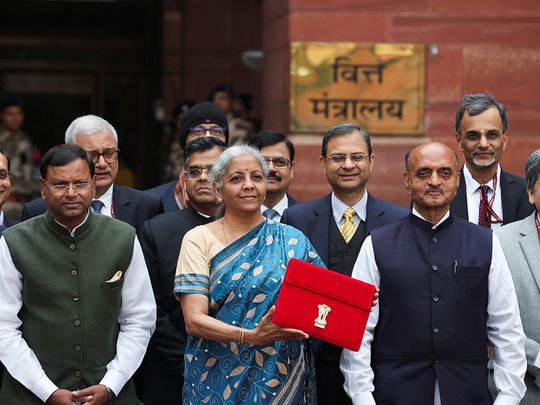
A popular government can afford to not be very populist. That’s the political takeaway from the Modi government’s “vote on account”, the pre-election budget.
After the Modi-led Bharatiya Janata Party (BJP) won three assembly elections in Rajasthan, Madhya Pradesh and Chhattisgarh, finance minister Nirmala Seetharaman had said the budget would be just a vote-on-account. That’s a technical accounting term for an election year budget, since technically the government budgets only for the pending term of the Lok Sabha and not the full financial year.
In reality, the pre-election budget is more important than a regular, full budget. After all, this is the last and final opportunity for the government to impress voters. General elections are likely to be announced in another five weeks or so.
Five years ago, in 2019, the vote-on-account was used to announce a brand new welfare scheme targeting small farmers. PM-KISAN gave small farmers Rs6,000 per annum in direct cash transfers, the first 2,000 of which were credited into their accounts just a few weeks before elections were announced.
Road map for developed India
The need for the PM-KISAN scheme had been felt in February 2019 because the BJP had lost its strongholds of Madhya Pradesh and Chhattisgarh due to unhappy farmers in December 2018.
The contrast between 2019 and 2024 speaks of the Modi government’s growing power and confidence. It also arguably speaks of an economy better positioned today than in 2019.
The lacklustre budget promises to be a break between the last budget and the next one in July 2024, which the finance minister said will lay out the road map for a “Viksit Bharat” or “Developed India”.
The budget was such a non-event that it didn’t affect the stock markets either positively or negatively. The big message from the budget was continuity and the men in suits value that over anything else.
In the run up to the budget all kinds of speculative stories did the rounds in the media: a new housing scheme, increases in allotments for rural employment guarantee wages, a new push for housing, doubling of free insurance cover for the poor, and so on. Not one story came to be true.
Good economics makes bad politics
It is rare that a government is able to resist the temptation of pre-election populism.
This is a brief glimpse of what the Modi government is going to be like in its third term. More confident, less worried about political pressures, more focused on the economy, specifically on pushing economic growth. The government does not feel compelled to choose political expedience over fiscal prudence.
Yet the pressures will come sooner than later. The pressures of youth unemployment, inequality and rural distress are never far away. The government faces no challenge in the election: the political conversation is about whether the BJP will win 300 or 350 seats in a Lok Sabha where the majority mark is 272.
The real challenges will come after the election, when the government will be faced with the onerous task of delivering high economic growth with low inflation, rising wages and job creation.
Thanks to shocks like the pandemic and demonetisation, the average GDP growth over the last ten years has been 4.3%. This is lower than what the Congress-led UPA coalition delivered in 2004-2014, when the average GDP growth rate was 6.2%. The government is now aiming for 7%. India has the potential to easily grow at 8%.
Economic growth has picked up since the pandemic. The challenge now will be to sustain it, give it momentum, without policy shocks and with continuity. That is why the message of continuity from this “interim” budget hits home.
In the last one year, net foreign direct investment has actually declined. Unlike the rest of the world, private investment is still not picking up in India. The economy is still not showing “animal spirits” so critical to job creation. That is why the government’s increase of capital expenditure by 11% in the budget was no surprise.
To these challenges, add geopolitical uncertainties and you get a picture that isn’t as comfortable as the one the interim budget presented.
Ultimately it’s not a question of if but when the government will increase its social sector spending, especially targeting rural youth. Two areas in particular feel rather neglected: education and health.
The wish list for a “Viksit Bharat” would ideally focus on these two areas.









